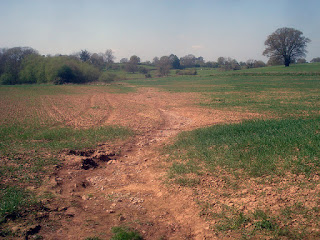Farmers Protest Unfair Crop Insurance
By John King
On Monday, March 12, fifty local farmers and protesters picketed the headquarters of NAU Insurance near Anoka, to protest inequities in the current Farm Bill that contribute to the disappearance of family farms and lead to soil erosion and depletion on marginal farm land.
“Crop insurance is the only Farm Bill program not subject to any limits on the amount of support any one operator can receive. It is uncapped,” said Randy Krzmarzick, who raises corn and soybeans near Sleepy Eye, Minn. “It gives the largest farm business operators access to more financial resources when renting or buying land, putting beginning farmers or small- and mid-sized diversified farms at a competitive disadvantage. We need reform.”
Crop insurance is a significant part of the Farm Bill amounting to over $9 billion in federal dollars. The 2018 bill is currently being crafted in the U.S. House of Representatives. Crop insurance was started in 1938 to prevent farmers from being wiped out by weather disasters, but according to Krzmarzick, has evolved into an expensive program benefiting the largest farms and insurance companies and damaging the environment in the process. Taxpayer’s dollars support the program by subsidizing up to 60% of the cost of the insurance premiums.
The Anoka demonstratio0n coincided with the release of a Land Stewardship Project https://landstewardshipproject.org study that showed in detail how crop insurance leads to outsized profits for insurance companies such as NAU and for corporate farms.
“The current crop insurance program benefits the largest farms and insurance companies the most, while penalizing farmers adopting good stewardship practices and making access to land for beginning farmers more difficult. We must protect a strong safety net for farmers, but at the same time we believe two critical reforms — sensible limits on subsidies and connecting the program to meaningful conservation-based farming practices - are needed,” Ben Anderson, of the Land Stewardship Project (LSP), said.
According to LSP, the current farm bill makes it possible for large farms to buy marginal farm land, plant a crop and when the crop fails or doesn’t show sufficient profit, and receive insurance payments. Since there are no limits on the amount of insurable acreage that can receive a premium subsidy, the largest farms capable of buying more and more marginal land receive the lion’s share of the payouts. Some Minnesota farms have received more than a million dollars in payouts. LSP proposes limiting premium subsidy to $50,000 to control the inequities in the program.
According to LSP, the current farm bill makes it possible for large farms to buy marginal farm land, plant a crop and when the crop fails or doesn’t show sufficient profit, and receive insurance payments. Since there are no limits on the amount of insurable acreage that can receive a premium subsidy, the largest farms capable of buying more and more marginal land receive the lion’s share of the payouts. Some Minnesota farms have received more than a million dollars in payouts. LSP proposes limiting premium subsidy to $50,000 to control the inequities in the program.
 |
| Thanks to Wikipedia |
The LSP report shows how the insurance companies are the true beneficiaries of the crop insurance program. For every dollar in insurance payouts that a farmer receives, the insurance company receives $1.44 amounting to more than $1.3 billion annually pocketed from taxpayer dollars and farmer premiums.
Seventh District Representative Collin Peterson is the leading Democrat on the House Agricultural Committee that is currently writing the new farm bill. His office, when contacted, opposed writing reforms into the bill saying, “Capping payouts will undermine the insurance program causing acres to leave. This will undermine the ability of smaller producers to access it because of increased premiums.”
The crop insurance industry has lobbied heavily to prevent reform of the program giving over $700,000 to Minnesota’s congressional delegation while the last Farm Bill was being drafted.
Tom Nuessmeier, who farms near Le Sueur, points to two government studies that refute Peterson's claim.
“There’s no real evidence that farmers like me would leave a $50,000 premium subsidy on the table and quit the program because we had to pay full unsubsidized price for acreage beyond that," he said. "The studies show subsidy caps will have minimal impact on premium costs for farmers.”
Crop Insurance reform has been a central policy priority of Land Stewardship Project’s “Our Farm Bill” campaign.
Comments
Post a Comment